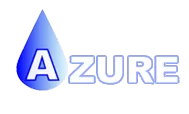
What is the SCR system? Watch the video to learn more.

Contents
Why Azure?
SCR is an active system that requires refilling DEF to ensure emissions system performance. DEF is related to engine fuel consumption. Failure to replenish diesel exhaust fluid tanks can result in the immobilization of the machine.
Ten years of supplying and processing high-quality diesel exhaust fluid turned Azure Chemical into one of Southern California’s best diesel exhaust fluid and coolant wholesalers and manufacturers.
Azure delivers these products to help all distributors and customers fulfill their storage and handling goals. It helps diesel engine owners meet the NOx reduction and let them be ready to promote a green planet.
How Does Selective Catalytic Reduction Work?
Exhaust gasses come out of the diesel engine and go into the selective catalytic reduction system, where diesel exhaust fluid is injected into a catalyst. The DEF provokes a chemical reaction on the SCR catalyst that converts NOx into nitrogen, water, and small amounts of CO2. The diesel particulate filter captures particle emissions, which are then expelled through the diesel engine tailpipe.
Selective Catalytic Reduction in Diesel Engines
To comply with the EPA emissions standards in 2011, all heavy-duty diesel engines have started to utilize SCR technology. These standards require diesel engine owners to reduce nitrogen oxides by 90% and particulate matter up to 30-50%.
The high efficiency of selective catalytic reduction systems in nitrogen oxide allows this system to help vehicles burn fuel more effectively than usual. It is one of the most cost-effective technologies as well.

SCR Emission System
The SCR System for Diesel Engines has been around for about more than ten years, and it is used extensively on both commercial and non-commercial vehicles. In addition, the maritime industry has employed SCR technology to reduce emissions.
Diesel Exhaust Fluid has a central role in the emissions control systems because inadequate levels of DEF fluid may be locked out and prevent the engine from starting. Modern diesel engines are equipped with liquid-level switches. They indicate audible or visual alerts to ensure the owner that the Adblue level is sufficient to allow the SCR technology to operate effectively.
Conclusion
The selective Catalytic Reduction (SCR) system is a process that minimizes the harmful nitrogen oxide (NOx) emissions manufactured by diesel vehicles. This technology converts NOx molecules to molecular nitrogen and water vapor. An SCR system uses aqueous ammonia to trigger a chemical reaction in a catalytic converter and turns pollutants into harmless emissions.
Sources
Wikipedia, the free encyclopedia, (2022, -) Selective catalytic reduction,Wikipedia.
https://en.wikipedia.org/wiki/Selective_catalytic_reduction
Diesel Technology Forum, (2022, -), Selective Catalytic Reduction, Diesel Technology Forum.
https://www.dieselforum.org/selective-catalytic-reduction-scr
SST, (2019, February 21), SCR (Selective Catalytic Reduction) Emissions System, what sensor do I need? SST.
https://sstsensing.com/scr-emissions-system/
